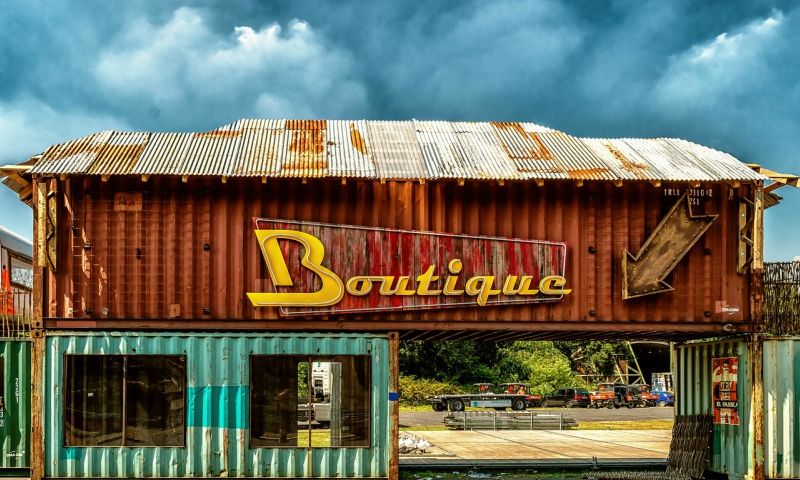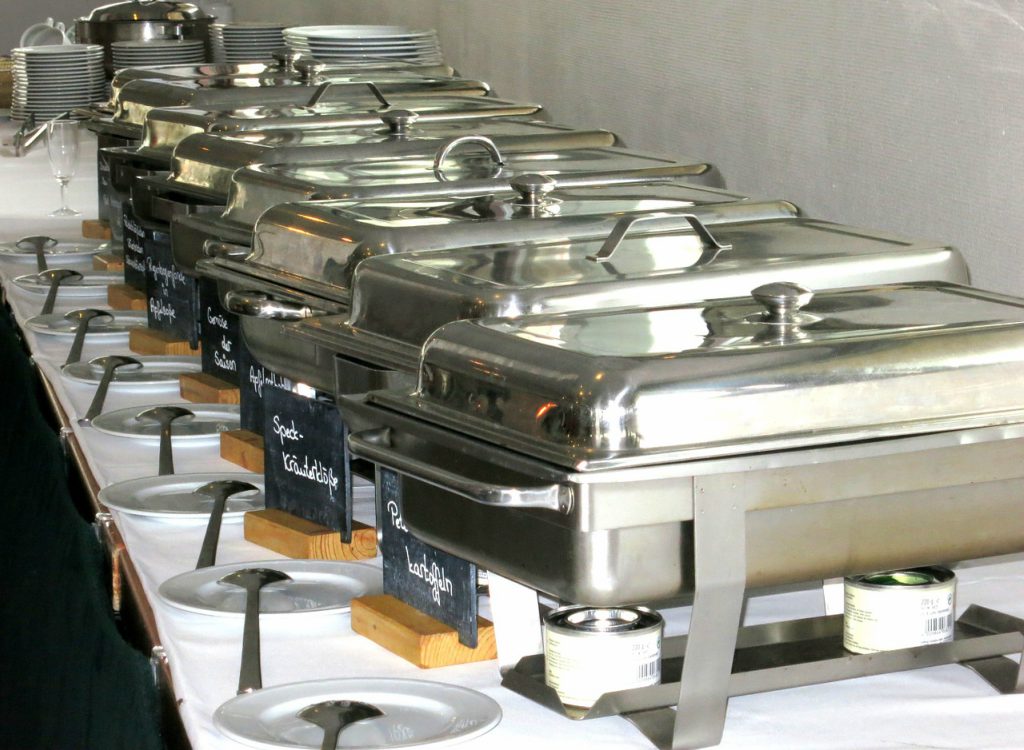Starting a clothing boutique business is a lucrative and enticing startup idea, mostly because of tons of opportunities available. The clothing boutique industry primarily includes standalone stores and retail stores that specialize in the limited and exclusive range of apparel and accessories. Boutiques can either be designer based or they may sell a mix of brands that are specifically catered to the local market. This business is booming due to low risks involved owing to recession and another downsizing. According to a leading report from IBISWorld, the worldwide market size of the clothing boutique business is $21 billion with an annual growth of 2.5% from the year 2012-2017.
Similarly, the Indian retail industry in clothing is the largest among all the industries, accounting for over 10% of the country’s GDP and around 8% of the employment. The current domestic textile industry is estimated to be US$ 33 billion whereas unstitched garments comprise US$ 8 billion. Textiles and clothing account for a phenomenal 14% of the total industrial production. In this section, we are here to discuss the steps that are crucial in starting a clothing boutique store. I would recommend you to read basics of starting a business also with this article.
-
Niche
In most cases, the boutique business is best suited for individuals with a quirky sense of fashion and style, who are able to showcase their products in the best possible way. A formal education in fashion is an added advantage that helps them pen down the designs that their minds can perceive. Your boutique business can either sell clothes from top designers or popular brands as well as children’s clothes. A boutique can also sell their own designs.
Before zeroing in on your niche, figure out how many boutiques sell items similar to those you intend to sell, what their price point is and how they market themselves. Also, see if there is a market for a new boutique in your neighborhood. This can be attributed to the demographics and shopping habits of people who live in the area. Below is a list of the industry products that are available in a boutique business:
- Women’s clothing
- Men’s clothing
- Children’s clothing
- Footwear
- Accessories
High-end products are made of the following materials like crinkle chiffon, georgette chiffon, Chinese raw silk, medium silk, leafy print jamawar, Chamois silk etc. A boutique can offer following product categories in men’s, women’s and kids’ clothing:
- Formal Wear
- Casual Wear
- Semi-formal Wear
- Ethnic Wear
Decide a unique name for your brand that is aligned with your product line and the level of service your clients can expect, your own personality or the style of clothing that you cater to. Keep abreast of the latest clothing trends in the industry and adapt to it. Another useful tactic is to introduce a full line of accessories like belts, shoes, purses, and jewelry and encourage clients to create the entire ensemble. Be available for your customers at all times as they are always drawn towards personal attention.
-
Business Roadmap
In order to start a boutique business, the concerned person should have sound knowledge about different types of fabrics and their shrinkage. They should be able to keep themselves abreast of new designs and trends and they should also be able to guide their customers about different designs that are suited for different occasions. One important factor that can keep you ahead of your contemporaries is to have separate staff for measurements of your male and female customers to facilitate ease and comfort of your employees. Your staff should be skillful to understand the garment industry and how to tackle and address customers’ concerns about their choice of clothes.
The business plan should encompass important pointers and detailed insights into where you intend to procure your inventory from and the amount of startup investment you will need. It should also highlight what is your target market, how you perceive your business growth in the next few years and what are your potential competitors. Costs of the location, utilities, taxes, business supplies, staff, marketing activities and expenses to obtain licensing should also be included.
-
Budget
For running a boutique business successfully you will need the budget for following things:
- Shop location rent- Rs. 30,000 per month; not applicable to a business that operates from home.
- Utilities- Rs. 30,000 per month
- Machinery and equipment- Rs. 2 lakh
- Licensing fee- Rs. 50,000
- Furniture and fixture (interior decoration) – Rs. 3 lakh
- Office equipment- Rs. 1 lakh
- Employees- Rs. 2 lakh
- Raw materials- Rs. 2 lakh
- Promotions- Rs. 10,000 per month
-
Legal
Obtain all the necessary certificates and permits from the city and state you plan to operate your business in. Check the zoning laws for your store location and get a sales tax permit. Obtain GST registration and make sure to comply with local licenses and permits for the same.
Select your business structure, be it a sole proprietorship, LLC, Inc. or a Pvt Ltd. In some places, clothing boutiques can also apply for a resale certificate that allows retailers to purchase goods intended for resale without paying sales tax. If your business intends to sell original clothing, that is exclusive to your own design label, it is important to receive copyrights and trademarks in relation to your brand name and logo.
-
Location
Select a location for your boutique that is bustling with popular shops and restaurants so that your store attracts multiple people each day or that offers a high volume of foot traffic during store opening times. These places can include malls or busy intersections. Alternatively, you can start a boutique business right from your home by reserving a separate room to carry out all the necessary work. Your boutique store should have sufficient space for the main shop, try room, small store, and kitchen and for stitching units.
Visit your city’s official website to understand the demographic data and accordingly, select an area based on the women or men or children that you intend to target. For instance, if you plan to sell high-end clothing in your boutique, select an area with high income population. Similarly, for boutiques that cater to women (which is mostly the case), opt for areas that are well suited for women safety so that they have no inhibitions of visiting your boutique at any convenient time that they feel is right for them.
Design your boutique and furnish it so that it reflects the taste of your product line. Pay attention to the exterior as well as the interior of the store to give it a comprehensive yet stylish look. Set up cash counters, shelving units, floor stands and in-store signage. Clean the counters and shelving units as well as floor and glass panels. Place your store timing signage on your front door. Place your clothing merchandise and accessories in an attractive way on shelves and hangers for customers to see when they enter your store. Purchase fixtures, chairs, tables and outdoor posters to give a holistic look to your store.
-
Raw Materials
Look out for the most reliable wholesaler supplier for your clothing boutique. Contact the National Association of Wholesaler-Distributors and ask the concerned person to help you with the supply of a list of clothing wholesalers. Compare prices from various wholesalers and pick the one that offers the lowest unit cost of clothing products.
Here is a list of important raw materials that are involved in starting a boutique business:
- Fabric and linen
- Accessories
- Buttons
- Laces
- Zippers
- Clasps
- Elastics
- Threads
- Needles
- Embroidery threads
- Glasses and mirrors
- Labels, tags, and packaging
-
Equipment
Below is a list of equipment that are needed in a boutique business:
- Stitching machinery/Sewing machine
- Embroidery machine
- Single needle lock stitching machine
- Overlock machine
- Shelving units
- Floor stands
- Signage
- Cash Registers
- Computer
- Computing software
- Store timings decal
- Hangers
- Mannequins
- Window dressing materials
- Jewelry and accessory cases
- Item showcase structures and racks
- Slatwall
- Telephones
- Office furniture
- POS systems
- Tagging supplies
- Packing supplies (shopping bags and gift boxes)
-
Labor
Being a customer-centric business, hire employees that are representatives of your boutique’s style, friendly and efficient. The staff should be reliable so that they are willing to work extra hours during weekends or during special occasions. Your employees should be passionate about clothing and serving the clients, just like you are. Below is a list of human resource requirements that are needed in your boutique business, depending on the scale and level:
- Production staff
- Designer
- Tailor
- Press/iron man/finishing
- Dyer
- Administrative staff
- Customer Service Staff
-
Marketing & Sales
There are many ways to promote and market your clothing boutique. Traditional mediums of advertisement include print, fliers, local ads in newspapers and other forms of print media. Distribute these to both walk-in clients and to prospective customers. Moreover, never miss an opportunity to contact people from your nearby circle, be it friends or family members as word of mouth becomes very successful in these types of businesses. Opt for catchy store displays to attract the attention of those walking by your business. Distribute stacks of fliers to non-competitive retailers, including muffler shops and beauty salons. Place fliers on people’s windshields in busy mall parking lots. Contact a local newspaper reporter and see if he will write a feature article about your new clothing boutique business.
Also, utilize the importance of a well-designed website and social media pages as a lot of boutique shoppers are young who find it easy to browse the internet and interact with you online. Best suited are visual sites like Pinterest and Instagram. On Instagram, you’ll be able to share new arrivals to your store, share visuals that you feel encapsulate your brand aesthetic (so, don’t just advertise), and ultimately reach new customers. On Pinterest, not only can you include products from your store, but by creating an engaging and inspiring Pinterest page, you’ll snag followers who might not have come via advertising alone. Invest in high quality photography with good lighting and backdrops and some brand ambassadors who can promote your clothing items.
Starting a blog not only get your boutique more exposure, as people will find your online boutique via links to your articles, but it will solidify your brand as a tastemaker within your niche. Contact a blogger or vlogger (video blogger) that you admire, who you believe embodies the look, ideals, and interests of your customer base. You can either send them a sample of your product, offer them a discount code to share with their followers, invite them to write a guest article for your blog—the possibilities are endless.
Pricing: Choose price points for your merchandise that are competitive with other boutiques in your city. If you choose to stock high-end clothes, then find a pricing structure that reflects the value or unique nature of your items.
Host an opening event with incentives such as giveaways or coupons for premium items. Take part in clothing exhibition and fashion shows, hand over visiting cards to walk-in customers and showcase your collection.
Offer special promotions, standard coupons, a free gift or small item with their next purchase, encouraging them to return. Encouraging your customers to register their information with you means you can also keep them in the loop via email or text.






0 Comments